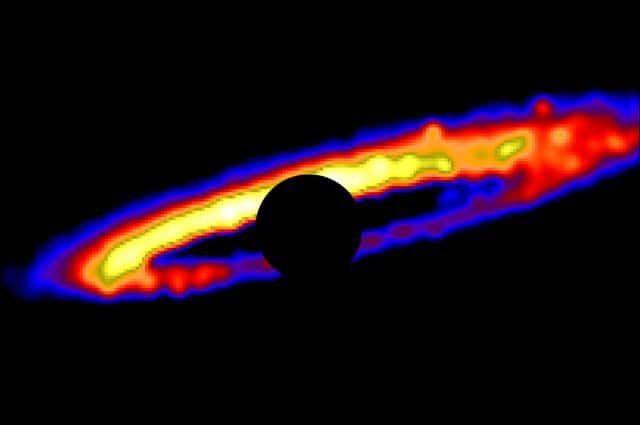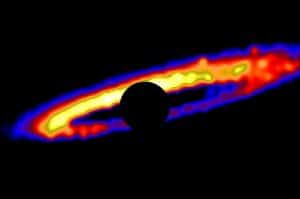
 An enormous young planet approximately 300 light-years from Earth has given astrophysicists a rare glimpse into planetary evolution.
An enormous young planet approximately 300 light-years from Earth has given astrophysicists a rare glimpse into planetary evolution.
The planet, known as HD 106906b, was discovered in 2014 by a team of scientists from the U.S., the Netherlands and Italy. It is 11 times the mass of Jupiter and is extremely young by celestial standards—not more than 13 million years old, compared with our own solar system’s age of 4.6 billion years.
“This is such a young star; we have a snapshot of a baby star that just formed its planetary system—a rare peek at the final stage of planet formation,” said Smadar Naoz, a UCLA assistant professor of physics and astronomy, and a co-author of the study.
Another of the planet’s unusual characteristics is its great distance from its star. Astronomers believe that the vast majority of planets outside of our solar system exist inside a dusty disk of debris relatively close to the center of the star’s planetary system. But HD 106906b is far beyond its planetary system’s dusty disk—so far away that it takes 1,500 years for the planet to orbit its star. HD 106906b is at least 650 times as far from its star as the Earth is from our Sun.
The study’s lead author is Erika Nesvold, a postdoctoral fellow at the Carnegie Institution for Science, whom Naoz mentors. She wrote software called Superparticle-Method Algorithm for Collisions in Kuiper belts and debris disks, or SMACK, that allowed the researchers to create a model of the planet’s orbital path—a critical step because HD 106906b orbits so slowly that the researchers can barely see it move.
The research, published online in the Astrophysical Journal Letters (http://iopscience.iop.org/article/10.3847/2041-8213/aa61a7), suggests that the planet formed outside the disk, where it is visible today, as opposed to having been formed inside the debris disk and then thrust far beyond it.
Naoz said that conclusion helps explain the shape of the debris disk. “It works perfectly,” she said.
The planet’s orbit is elliptical; it gets much closer to the star on one side of its orbit than on the other. And its gravity produces an elliptical shape in the star’s debris disk as well. One side of the disk is closer to the star than the other side, and the dust on that side is warmer and glows brighter as a result.
The debris disk was photographed in 2016 by American and European astronomers. According to Naoz, the disk is an analog to our solar system’s Kuiper belt—an enormous cluster of small bodies like comets and minor planets located beyond Neptune.
The researchers don’t know if there are additional planets inside the disk, but using Nesvold’s software—which is also being used to study other debris disks in the universe—they were able to re-create the shape of the disk without adding another planet into the model, as some astronomers had thought would be required.
Naoz’s research was funded by a research fellowship from the Alfred P. Sloan Foundation. Nesvold’s was supported by a Carnegie Department of Terrestrial Magnetism postdoctoral fellowship.


Be the first to comment